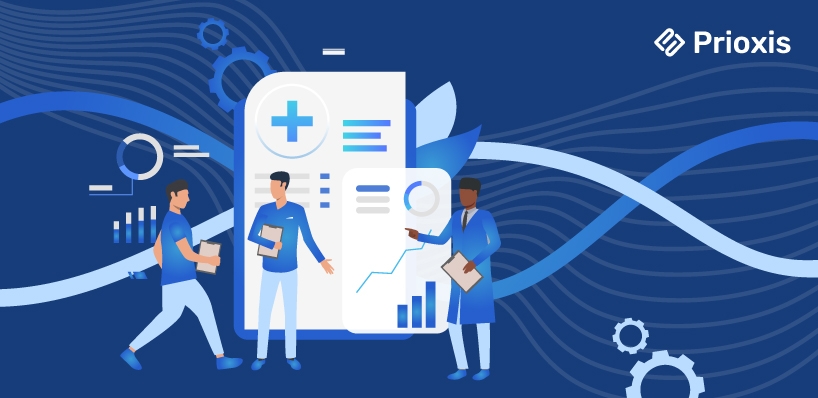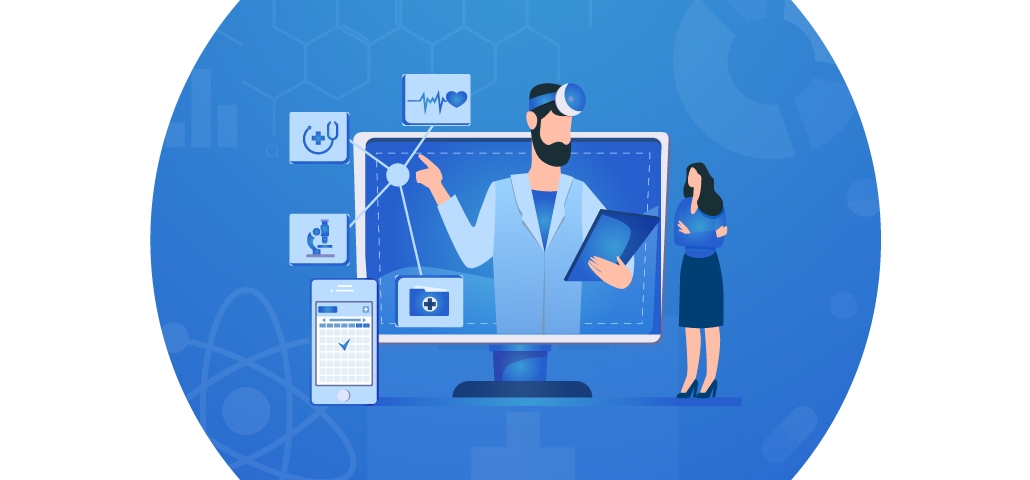Legacy Healthcare Software Modernization: Expert Guide
 Admin
Admin Digital Transformation
Digital Transformation Nov 18, 2024
Nov 18, 2024

Table of Content
Imagine you’re the head of IT at a hospital. Your team is stretched thin trying to keep a fifteen-year-old system afloat. Nurses are complaining about system slowdowns, doctors are frustrated by delays in accessing patient records, and the billing department is struggling with endless claim processing lags.
You know this system wasn’t built for today’s demands. It’s a relic from a time when electronic health records (EHR) were new, and cybersecurity threats were minor. Today, the stakes are higher—patient data is more valuable than ever, and the complexity of care requires seamless, reliable technology.
Your hospital isn’t alone. Over 70% of large healthcare providers still rely on legacy systems, risking inefficiencies, increased costs, and data breaches. If you’re reading this, it’s likely because you’ve started to wonder if it’s time to make a change.
In this guide, we’ll break down why legacy systems are holding healthcare back, how to recognize the signs that it’s time to modernize, and the steps to make it happen with minimal disruption.
By the end, you’ll have a roadmap for bringing your technology up to speed, improving operations, protecting patient data, and delivering the seamless experience your patients deserve.
Let’s dive in.
The Cost of Holding onto Legacy Systems in Healthcare
When healthcare providers cling to outdated technology, the hidden costs add up quickly. While it may seem “cheaper” to maintain these systems, the reality is their bleeding money, time, and resources.

Increased Maintenance Costs
Legacy systems require regular maintenance just to keep them functioning, and they often need highly specialized skills. Studies show that the U.S. government spends $337 million annually maintaining ten of its legacy systems.
For healthcare providers, the costs are similarly eye-watering as these systems demand constant fixes, patches, and workarounds.
Productivity Losses
Outdated systems slow down every aspect of hospital operations. Whether its doctors waiting for EHRs to load, billing departments handling claim rejections, or IT teams fighting to prevent system crashes, these delays add up to lost hours. In healthcare, every minute counts, and the consequences are magnified.
Cybersecurity Risks
Legacy systems in healthcare are a prime target for cyberattacks. Without modern security features, they leave healthcare providers vulnerable to data breaches.
Given that healthcare data breaches have become increasingly common, with 2024 seeing record numbers, relying on outdated technology is like leaving the doors unlocked.
Compliance Risks
In the healthcare industry, data compliance is non-negotiable. Regulations like HIPAA (in the U.S.) and GDPR (in Europe) require organizations to secure sensitive information. Older systems often lack the ability to meet these standards, putting providers at risk of hefty fines and potential lawsuits.
Simply put, the cost of not upgrading is high. It’s not just about money—it’s about efficiency, security, and the ability to serve patients without technology getting in the way.
The Real-World Challenges of Legacy Systems in Healthcare
Legacy systems in healthcare come with a specific set of challenges that affect everything from patient care to operational efficiency. Here are some of the biggest issues hospitals face with these outdated technologies:
1. Limited Interoperability
Modern healthcare demands systems that are connected to each other. From EHRs and diagnostic tools to patient engagement platforms, all systems need to connect and share data seamlessly. But legacy medical solutions weren’t built with interoperability in mind. This means data is often siloed, creating bottlenecks that make it harder to access patient information quickly.
Imagine a patient arriving at the ER, but their lab results and imaging data are trapped in an old system that doesn’t integrate with the hospital’s other departments. Doctors waste precious time trying to pull together a complete picture, delaying care. In an industry where minutes can save lives, these delays are unacceptable.
2. Increasing Vulnerability to Cyber Threats
With patient data being a top target for cybercriminals, healthcare providers can’t afford to have vulnerable systems. Older systems, lacking the latest security patches and encryption, make it easier for hackers to exploit weaknesses. For healthcare providers, a data breach doesn’t just mean bad press—it’s a direct threat to patient safety and trust.
3. Productivity Losses Due to Slow Systems
Outdated systems slow down workflows. When staff spend more time waiting for data to load or re-entering information because systems won’t sync, productivity plummets. This affects healthcare staff and patients. Imagine a doctor waiting five minutes for an EHR to load, repeating this process throughout a shift. The hours wasted could have been spent with patients.
4. High Maintenance Costs
Maintaining legacy systems isn’t just about keeping the lights on—it’s about managing a complex and aging infrastructure. These systems require frequent repairs, updates, and, often, specialized (and expensive) personnel. As skilled workers familiar with older coding languages retire, finding replacements becomes even more challenging and costly.
Why Modernization Matters: The Key Benefits of Upgrading
So why go through the hassle of modernization? Here’s what healthcare providers stand to gain:
- Enhanced Efficiency and Speed Modern systems streamline processes, from scheduling and patient records to billing. With fast, intuitive systems, healthcare providers can reduce wait times and serve patients more effectively.
- Stronger Data Security and Compliance New systems come with built-in security features that protect patient information and meet compliance standards. This means fewer worries about data breaches and penalties, plus more peace of mind for patients.
- Reduced Long-Term Costs While modernization requires an upfront investment, it ultimately reduces operational costs. Modern systems are easier to maintain and come with fewer recurring issues, making them more cost-effective in the long run.
- Improved Patient Experience Patients today expect digital experiences. Whether it’s online appointment booking, telehealth, or easy access to their medical records, modern systems allow healthcare providers to meet these expectations and improve patient satisfaction.
- Competitive Advantage As more healthcare providers upgrade, those still relying on legacy systems risk falling behind. For patients and partners alike, a modern, efficient healthcare system is a sign of reliability and professionalism.
Strategies for Legacy System Modernization in Healthcare
The good news is that modernization doesn’t have to mean throwing everything out and starting from scratch. Healthcare providers have several options, depending on their needs, budget, and current infrastructure. Let’s explore the main strategies:
1. Encapsulation
Encapsulation involves creating a “wrapper” around the legacy system, allowing it to connect with newer applications through APIs. This approach maintains the core system but enables it to work with modern technology, adding flexibility and new functionalities without a complete rebuild.
2. Rehosting (Lift and Shift)
If a system is stable but needs a more modern infrastructure, rehosting can help. Rehosting moves the legacy medical solutions to a new environment, such as the cloud, without altering its code. This approach boosts performance and scalability and can also make the system more accessible to users working remotely.
3. Refactoring
Refactoring is like tuning up an old car. It doesn’t change the system’s functionality, but it improves the code’s structure for better performance. This can reduce costs, speed up processes, and make the system easier to maintain without replacing it.
4. Rebuilding
In some cases, rebuilding from scratch is the best option. Rebuilding involves creating a new system that replicates the legacy system’s functionality but adds modern features and capabilities. It’s a big commitment but can lead to a more powerful, scalable solution.
5. Replacing
When a legacy system is too outdated to fix, replacing it entirely is often the only option. While this can be disruptive, replacing an old system with a modern solution ensures maximum compatibility, efficiency, and security.
6. Rearchitecting
Rearchitecting shifts the legacy system from a monolithic to a microservices-based architecture. By breaking down the system into smaller, manageable parts, healthcare providers gain flexibility and can update individual components without affecting the entire system.
Real-World Success Stories of Legacy System Modernization
Let’s look at two healthcare providers who took the plunge and modernized their legacy systems. These examples highlight the practical benefits of modernization, and the results healthcare providers can achieve.
NextGen Healthcare
- Challenge NextGen’s legacy system was costly to maintain, and it couldn’t keep up with the growing demand for virtual visits.
- Solution By moving their infrastructure to AWS, NexGen reduced operational costs and increased reliability. They used managed IT services, allowing their system to scale up as demand increased.
- Results During the COVID-19 pandemic, NextGen accommodated a 140x surge in virtual visits. This not only met the demand but also reduced maintenance costs and improved system reliability.
Tufts Medicine
- Challenge Outdated systems were making it difficult for Tufts Medicine to share data quickly and securely across its facilities.
- Solution Tufts Medicine migrated its electronic health records to AWS, which allowed for faster deployment and integration with other systems.
- Results By moving to the cloud, Tufts Medicine improved its patient experience, streamlined workflows, and saved on infrastructure costs.
These case studies showcase how modernization can directly improve operations, patient care, and cost efficiency.
Actionable Steps to Begin Legacy System Modernization
Assess Your Current Systems
Start with an in-depth assessment of your current technology. Identify which parts of the system are causing the most issues, costing the most in maintenance, or not meeting compliance standards.
Define Your Goals
What do you want to achieve with modernization? Whether it’s enhancing security, improving patient experience, or cutting costs, defining clear goals will help guide your decision-making process.
Select a Modernization Approach
Based on your assessment, choose a strategy that fits your needs—whether that’s encapsulation, rehosting, refactoring, or a full replacement.
- Choose a Technology Stack Select technologies that support scalability, compliance, and security. Many healthcare providers choose cloud solutions like AWS or Google Cloud, as they offer robust security and HIPAA-compliant options.
- Develop a Data Migration Plan Data migration is one of the most critical parts of modernization. Create a plan that ensures data accuracy, security, and minimal disruption.
- Train Your Team Transitioning to a new system takes adjustment. Plan training sessions for your staff so they’re comfortable with the new technology, reducing resistance and easing the transition.
- Monitor and Optimize Once the new system is live, monitor it closely. Look out for any performance issues and adjust as needed to keep it running smoothly.
The Payoff: What Healthcare Providers Gain from Modernization
Modernizing legacy systems isn’t just about keeping up with the times. It’s about making meaningful improvements that benefit patients, staff, and the healthcare provider.
Enhanced Security With new systems in place, healthcare providers can meet the latest security standards and reduce their vulnerability to data breaches.
Improved Efficiency Modern systems reduce manual tasks, streamline workflows, and free up staff to focus on patient care, rather than wrestling with technology.
Cost Savings While modernization requires an upfront investment, it reduces long-term costs by minimizing maintenance and operational inefficiencies.
Better Patient Experience Today’s patients expect seamless experiences, and modernized systems allow providers to deliver, whether it’s through telehealth, mobile access to records, or faster appointments.
Competitive Edge In a competitive landscape, Healthcare Software Modernization demonstrates a commitment to excellence, helping healthcare providers attract and keep patients and partners.
Start Your Journey with Prioxis
At Prioxis, we specialize in helping healthcare providers transition from outdated systems to modern, secure, and scalable solutions. Whether you’re looking to rehost, rebuild, or replace, our team can guide you through each step to ensure a smooth and successful transition. Reach out to us today to see how we can help your organization build a future-ready healthcare system that serves both patients and staff.
Get in touch
